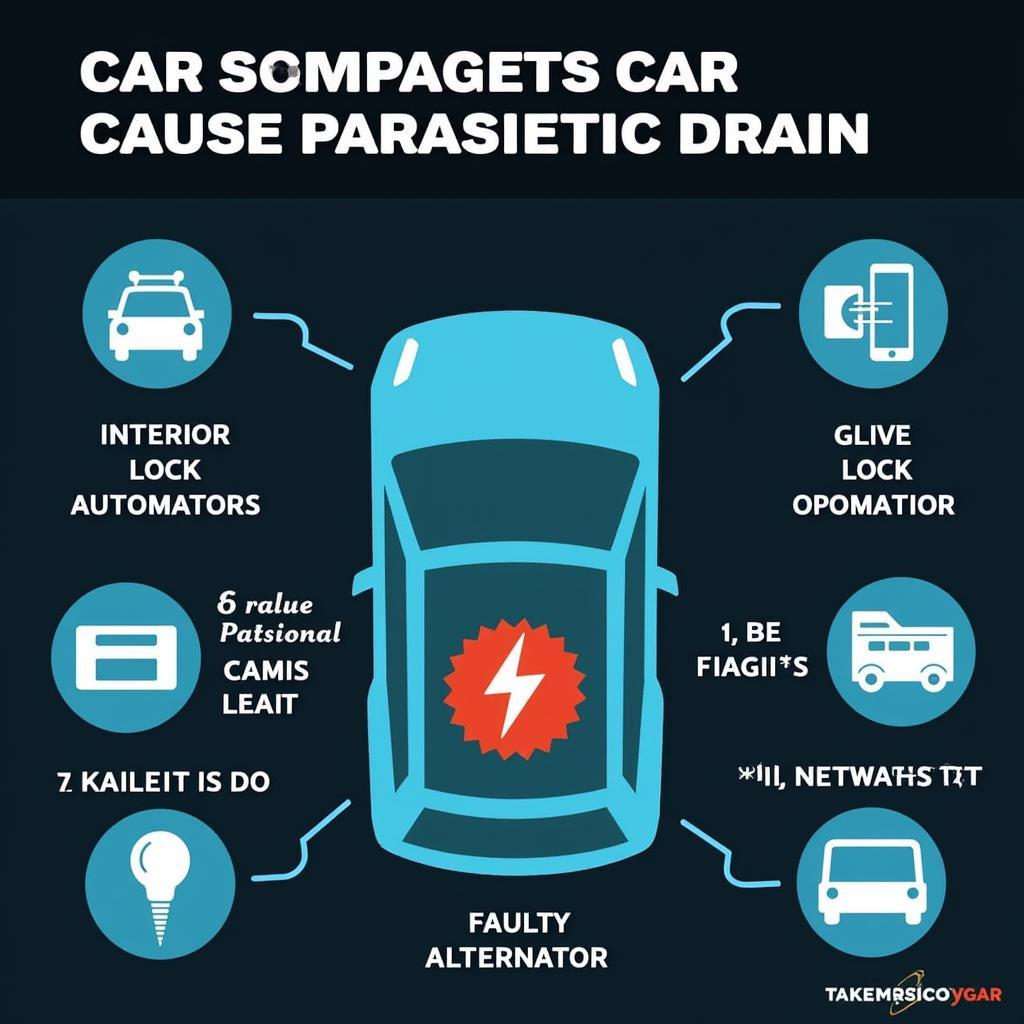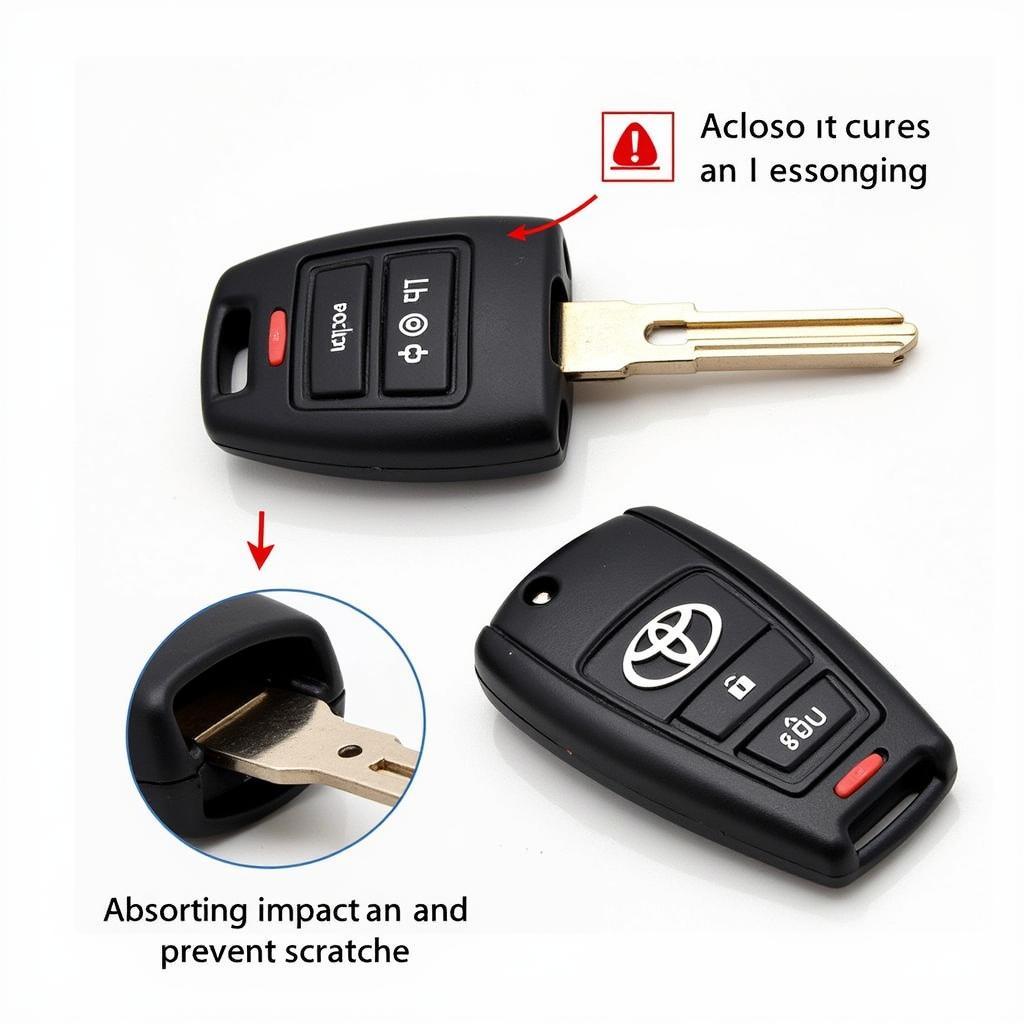A parasitic drain test is crucial for identifying why your car battery keeps dying. This guide will provide a step-by-step approach to performing this test, enabling you to pinpoint the culprit and save yourself time and money.
Understanding the Parasitic Drain
A parasitic drain, also known as a “phantom load” or “key-off drain”, occurs when electrical components continue to draw power from your car battery even after the ignition is off. This slow but steady discharge can leave you with a dead battery, especially overnight or after a few days of inactivity.
Why is a Parasitic Drain Test Important?
A parasitic drain test helps you identify the source of the drain, preventing repeated instances of a dead battery. It empowers you to address the root cause, rather than just continually jump-starting or replacing your battery.
Common Causes of Parasitic Drain
Several components can contribute to a parasitic drain, including:
- Faulty interior lights
- Malfunctioning door lock actuators
- Defective glove compartment light switch
- Aftermarket car alarms or stereo systems
- Faulty alternator diodes
- Stuck relays
 Common Causes of Parasitic Drain in Car Batteries
Common Causes of Parasitic Drain in Car Batteries
How to Perform a Parasitic Drain Test
Before you begin, gather the following tools:
- Digital multimeter with a 10A DC amp clamp or a multimeter with a milliamp function
- Test light (optional)
- Protective gloves and eyewear
Here’s a step-by-step guide:
-
Prepare your vehicle: Ensure your ignition is off, all lights are switched off, doors are closed, and any accessories are unplugged.
-
Disconnect the negative battery terminal: Using a wrench, carefully loosen and disconnect the negative cable from the battery terminal. Important: Wear protective gloves and eyewear when working around car batteries.
-
Connect the multimeter: If using an amp clamp, clamp it around the disconnected negative battery cable. If using a multimeter with milliamp function, connect the red lead to the disconnected negative cable and the black lead to the negative battery post.
-
Observe the reading: A healthy vehicle should draw less than 50 milliamps (0.05 amps). A reading significantly higher indicates a parasitic drain.
-
Identify the culprit: If the reading is high, begin systematically removing fuses one at a time while observing the multimeter reading. When the reading drops significantly, you’ve identified the circuit with the parasitic drain. Consult your vehicle’s owner’s manual to determine which components are on that circuit.
-
Isolate the problem: Once you’ve identified the circuit, check each component on that circuit. You can use a test light to check for power at each component.
-
Reconnect the battery: After addressing the issue, reconnect the negative battery terminal and retest the current draw to confirm the drain is gone.
Advanced Troubleshooting Techniques
If you’re unable to isolate the drain using fuses, consider these advanced techniques:
- Relay testing: Check relays for sticking or malfunction.
- Alternator diode test: A faulty alternator diode can cause a drain. This requires specialized testing equipment.
- Professional diagnosis: If you’re still struggling, consult a qualified automotive electrician.
“A common mistake is assuming a new battery will fix the problem,” says Robert Johnson, a veteran automotive electrical systems specialist. “Addressing the underlying parasitic drain is crucial for long-term battery health.”
Preventing Future Parasitic Drains
- Be mindful of aftermarket installations: Ensure any aftermarket accessories are properly installed and wired.
- Regularly check your battery: Periodic battery testing can reveal developing issues.
- Address electrical problems promptly: Don’t ignore warning signs like dimming lights or slow starting.
“Prevention is always better than cure,” advises Maria Sanchez, an automotive engineer with over 20 years of experience. “Regular maintenance and prompt attention to electrical issues can prevent many parasitic drain problems.”
Conclusion
Performing a parasitic drain test is a straightforward yet powerful way to protect your car battery and avoid the frustration of a dead battery. By following the steps outlined in this guide, you can identify and address the root cause, ensuring your vehicle starts reliably every time. Remember to test your car battery for parasitic drain if you suspect a problem.
FAQ
-
What is a normal parasitic drain reading? A healthy car should draw less than 50 milliamps (0.05 amps).
-
Can I drive my car with a parasitic drain? Yes, but your battery will likely drain eventually, leading to starting problems.
-
How long does a parasitic drain test take? It typically takes 30 minutes to an hour, depending on the complexity of the issue.
-
Do I need special tools for a parasitic drain test? A digital multimeter with an amp clamp or milliamp function is essential.
-
What if I can’t find the source of the drain? Consult a qualified automotive electrician for professional diagnosis.
-
Can a bad alternator cause a parasitic drain? Yes, a faulty alternator diode can contribute to a drain.
-
Can leaving the interior lights on overnight cause a parasitic drain? While interior lights can drain a battery, they are usually easily identifiable and not considered a true “parasitic” drain.



